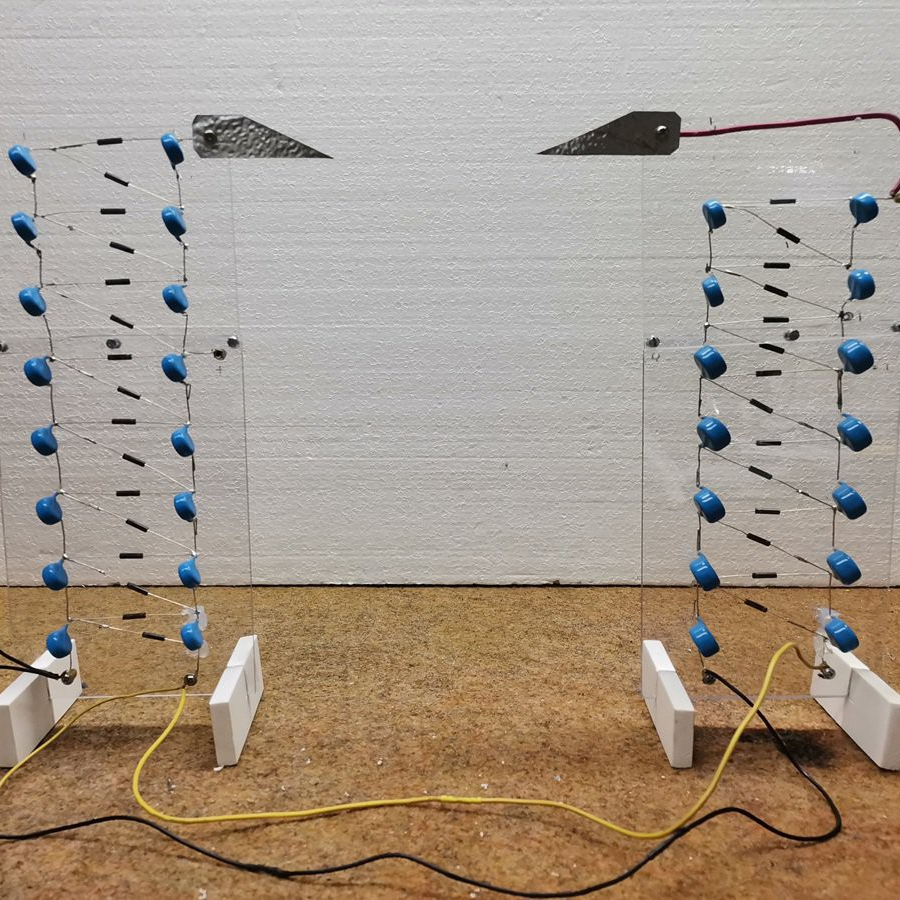This 330kV PC PSU Frankenstein Will Kill Your Dream Builds
Hello everyone. Today’s prescription from the good doctor comes with a healthy dose of sarcasm, a jab of reality, and about 330,000 volts of incredulity. Brace yourself — we’re about to talk about someone who decided that the safe world of low-voltage electronics just wasn’t spicy enough and instead built a Cockcroft-Walton voltage multiplier that could probably vaporise your hopes, dreams, and most of your internal organs in a single unfortunate arc.
The “Why Not” School of Engineering
First off, the core concept here is straightforward — if by straightforward you mean taking a perfectly innocent PC ATX power supply and introducing it to an after-hours back alley surgery involving Schottky diode removal and a sketchy second transformer. This Franken-supply transforms your nice, safe 15 volts into a high-voltage monstrosity capable of jumping over a foot through open air. At that point, it’s less a “bench tool” and more a “villain’s final boss arena.”
Of course, the Cockcroft-Walton multiplier, that old chestnut of diodes and capacitors, is rolled out here in all its voltage-stacking glory. The build uses 3mm Plexiglas for insulation — not just to keep the electrons in line, but presumably to give bystanders a lovely view of the thing that might send them to the emergency room.
Danger Level: “Not for Beginners”
This is the kind of project that comes with a built-in Darwin Award qualifier. High voltage here isn’t your “mind the static shock” kind of scenario — we’re talking about a machine that outputs 350 times the voltage that qualifies as dangerous. The sort of hardware where “oops” doesn’t mean you restart your PC, it means your funeral playlist gets queued early. If you approach this without full knowledge and proper precautions, you won’t be building another project… ever.
In gaming terms, this is hardcore mode. No respawns. No save points. Just you, the multiplier, and an invisible one-hit-kill zone.
The Elephant in the Workshop: Sponsorship Drama
But of course, no modern DIY Tech article would be complete without the great internet philosophical debate on sponsorship. Yes, it appears someone dared to mention a PCB manufacturer despite PCs having exactly zero significant PCB involvement. Cue the chorus of “selling your soul” from the peanut gallery. Apparently, the moral dimensions of accepting sponsorship from a reasonably legitimate service trumps the thrill of casually creating a death-ray-in-waiting on your bench.
Let’s be brutally clear: YouTube sponsorship is the loot box of video content — sometimes harmless, sometimes irritating, often irrelevant, and occasionally dropping something genuinely useful. PCBWay or VPN grifts? Sure, debate it if you like. But spending more time moralising about that than on discussing the probable current limitations of an eight-stage C-W multiplier? Well, you’re telling on yourself, really.
Engineering Footnotes
- Each multiplier stage adds voltage, but at a cost: the lower stages shoulder the current for the entire stack — think tanking in an MMO while everyone else DPS’s from a safe distance.
- Load handling here is a joke — the impedance balloons as you add stages, meaning output current remains minimal. This is not your high-power microwave haven.
- Efficiency? Calling it “horribly inefficient” might actually be a compliment. This design leaks energy like a healer forgetting to keep the HoTs rolling.
So… Is It Good?
The build is impressive in the same way watching someone tightrope between two skyscrapers is impressive — technically brilliant, jaw-dropping, and deeply inadvisable for 99% of humanity. On the technical front, it’s a workable implementation of an old high-voltage trick, albeit neither efficient nor practical for most bench purposes. It’s essentially a showpiece: sparks, arcs, drama, and bragging rights — just don’t expect to run a serious load from it without collapsing voltage faster than your KD ratio in a battle royale when you spawn without loot.
As for the sponsorship hand-wringing? Please. If you want unfunded content utopia, go live in fantasy land with unicorn-powered oscilloscopes. Otherwise, accept that creators hustle to pay for their next project, even if it’s “just for fun.”
Final Verdict
Cliff notes: A technical curiosity. A death trap if mishandled. A visual spectacle. And an excellent reminder that while advertising may be annoying, electricity doesn’t care about your ethics — it will fry you just the same, sponsor or not.
Overall impression: Good build for the experienced, terrible idea for the casual tinkerer, and a magnificent mess for comment section philosophers. And that, ladies and gentlemen, is entirely my opinion.
Source: Sparks Fly: Building a 330 kV Supply from a PC PSU, hackaday.com



